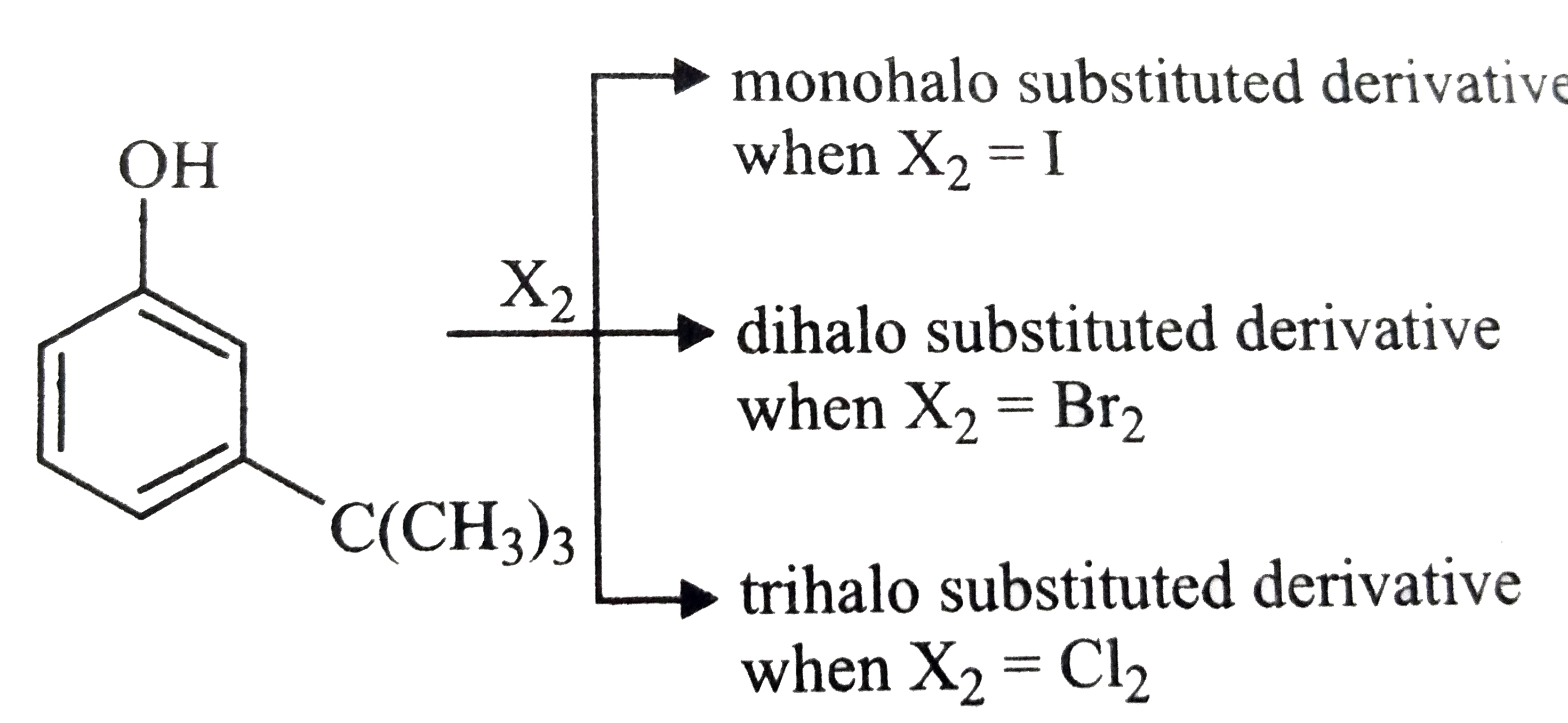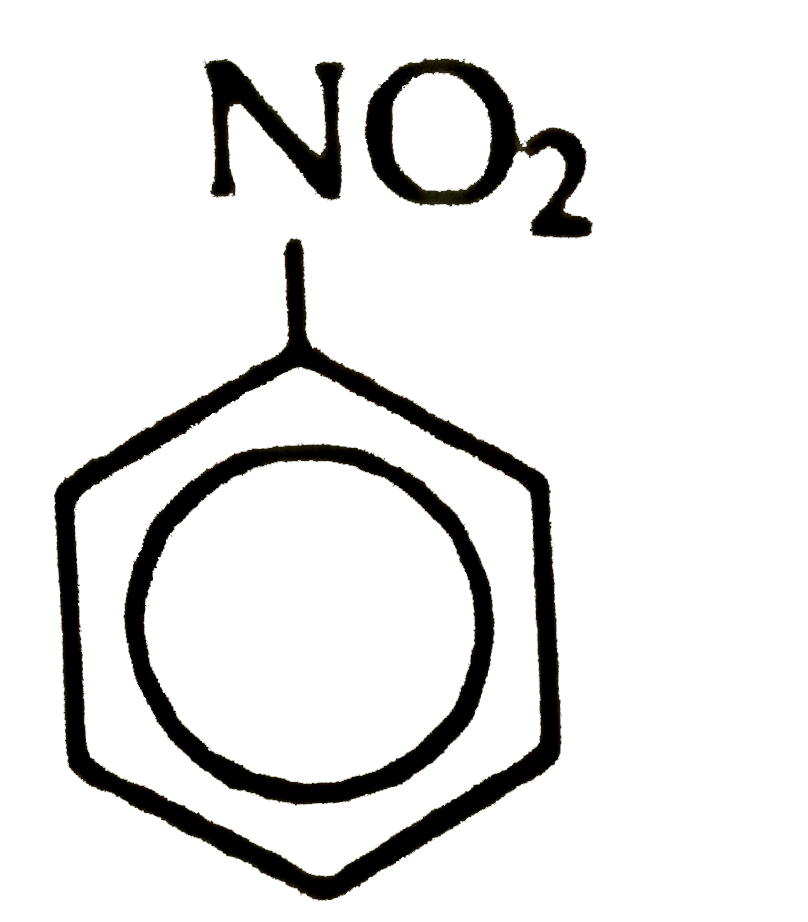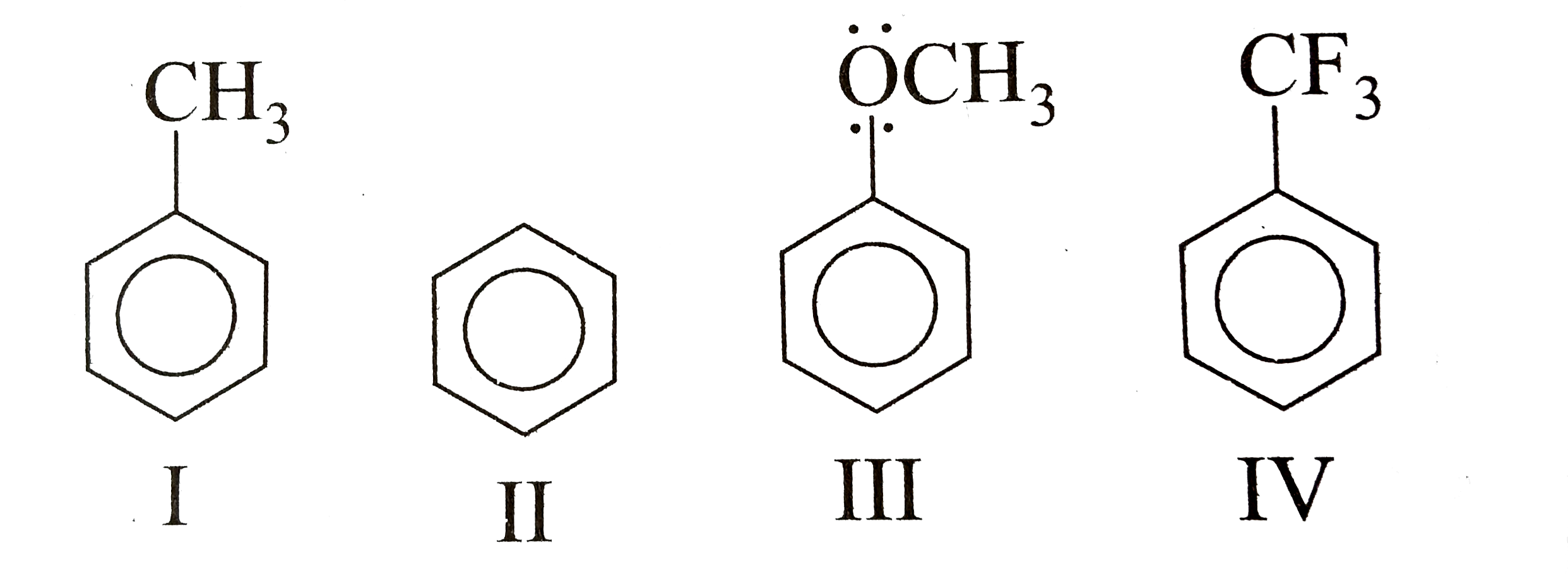The reactivity of compound Z with different halogens under appropriate conditions is given below:

The observed pattern of electrophilic substitution can by explained by
the steric effect of the halogen
the steric effect of the tert-butyl group
the electronic effect of the phenolic group
the electronic effect of the tert-butyl group
The correct Answer is:A, B, C
Due to electronic effect, phenolic OH group, is o, p-directing. Thus, option (c) is correct. Due to steric hindrance of halogen, i.e., I2 and steric hindrance of the tert-butyl group, I enters only at position 6 to give monoiodo derivative. Br atom being smaller than I, therefore, it does not enter at position 2, but enters at positions 4 and 6 to give dibromo derivative. in contrast, Cl being the smallest halogen, does not offer any steric hindrance and hence it enters at positions 2,4 and 6- to give 2,4,6-trichloro derivative. thus, options (a,b,c) are correct.
Topper's Solved these Questions
- BOOK - PRADEEPCHAPTER - ALCOHOLS, PHENOLS AND ETHERSEXERCISE - COMPETITION FOCUS JEE (MAIN AND ADVANCED)/MEDICAL ENTRANCES SPECIAL (MULTIPLE CHOICE QUESTIONS -III) Comprehension8videos
ALCOHOLS, PHENOLS AND ETHERS
- BOOK - PRADEEPCHAPTER - ALCOHOLS, PHENOLS AND ETHERSEXERCISE - COMPETITION FOCUS JEE (MAIN AND ADVANCED)/MEDICAL ENTRANCES SPECIAL (MATCHING TYPE QUESTIONS-IV)4videos
ALCOHOLS, PHENOLS AND ETHERS
- BOOK - PRADEEPCHAPTER - ALCOHOLS, PHENOLS AND ETHERSEXERCISE - COMPETITION FOCUS JEE (MAIN AND ADVANCED)/MEDICAL ENTRANCES SPECIAL (MULTIPLE CHOICE QUESTIONS WITH ONE CORRECT ANSWER-I)97videos
ALCOHOLS, PHENOLS AND ETHERS
- BOOK - PRADEEPCHAPTER - ALDEHYDES, KETONES AND CARBOXYLIC ACIDS EXERCISE - IMPORTANT QUESTIONS FOR BOARD EXAMINATION29videos
ALDEHYDES, KETONES AND CARBOXYLIC ACIDS
Similar Questions
The reactivity of compound Z with different halogens under appropriate conditions is given below

The observed pattern of electrophilic substitution can be explained by :View SolutionThe reactivity of compound Z with different halogens under appropriate conditions is gives below-

The observed pattern of electrophilic substitution can be explained by-View Solution
Knowledge Check
- Question 1 - Select One or More
The reactivity of compound Z with different halogens under appropriate conditions is gives below-

The observed pattern of electrophilic substitution can be explained by-AThe steric effect of the halogenBThe steric effect of the tert-butyl groupCThe electronic effect of the phenolic groupDThe electronic effect of the turt-butyl group - Question 2 - Select One
The reactivity of compound Z with different hologebs under apppropriate conditions is give below:

The observed pattern of electrophilic substitution cannot by explained byAThe steric effect of the halogenBThe steric effect of the tert-butey1 groupCThe electronic effect of the phenolic groupDThe electronic effect of the tert-buty1 group - Question 3 - Select One
The most reactive compound in electrophilic substitution reaction is
A B
B C
C D
D

Among the compounds the order of decreasing reactivity towards electrophilic substitution isView SolutionThe most reactive compound towards electrophilic substitution reaction is
View SolutionThe most reactive compound towards electrophilic substitution reaction is :-
View Solution
Among the compounds the order of decreasing reactivity towards electrophilic substitution isView SolutionWhich of the folliwng compounds is the most reactive towards electrophilic substitution reaction?
View Solution

